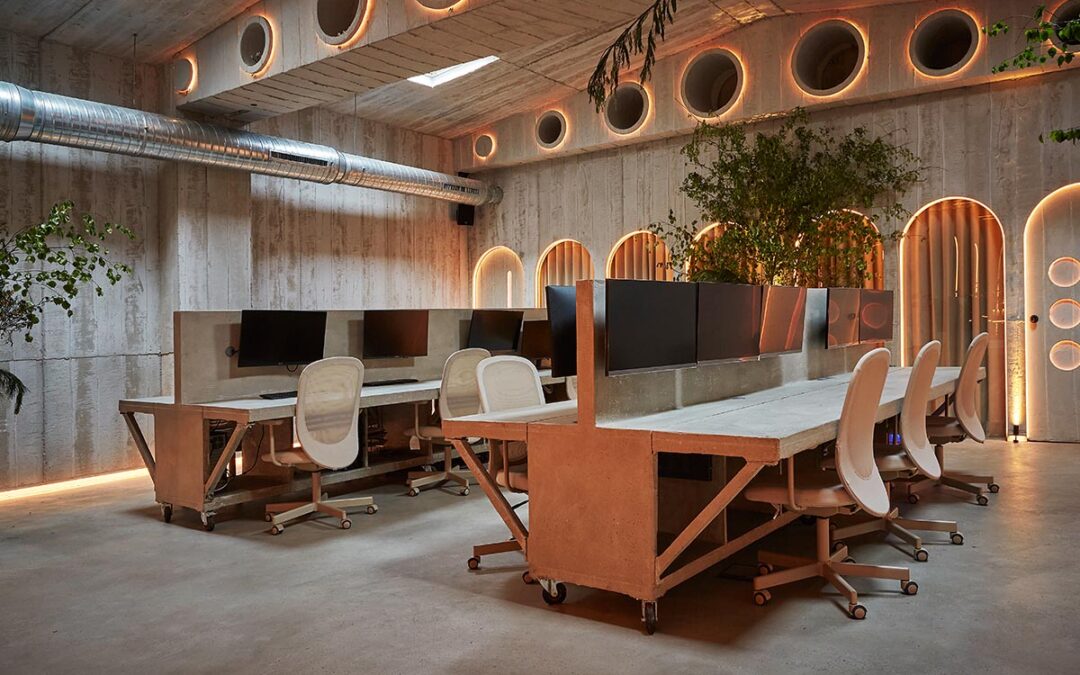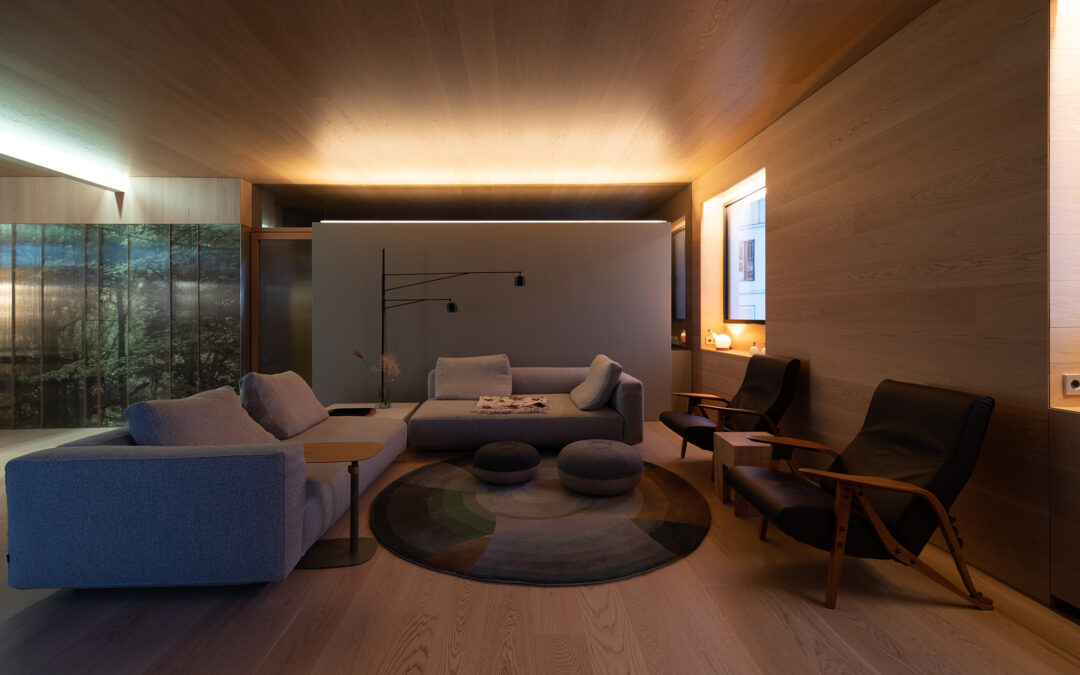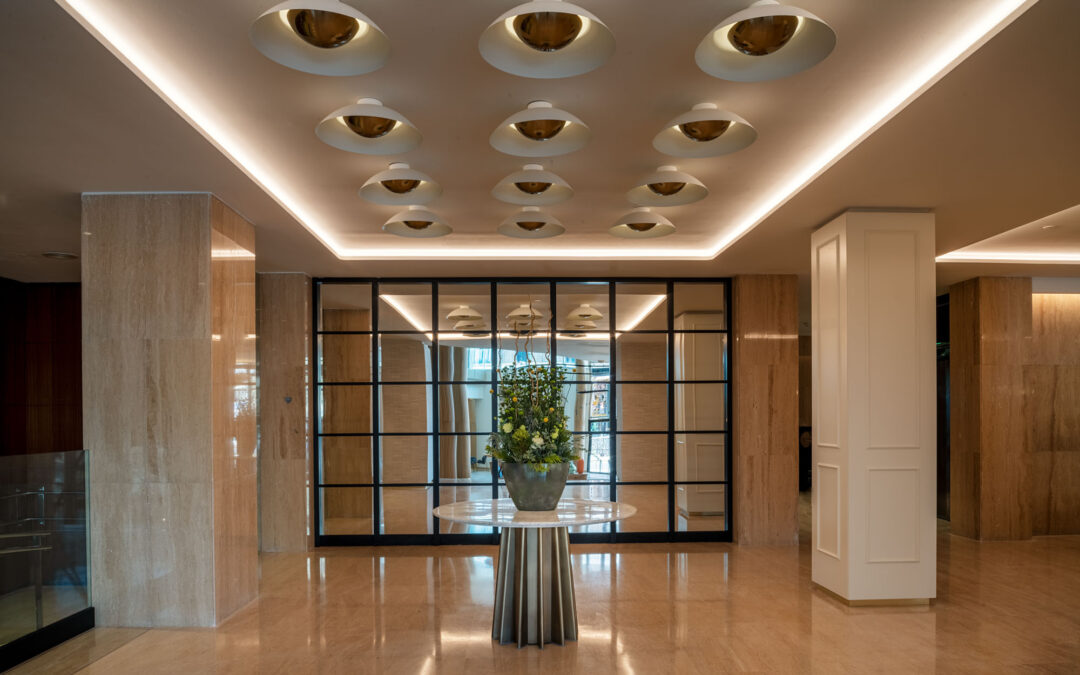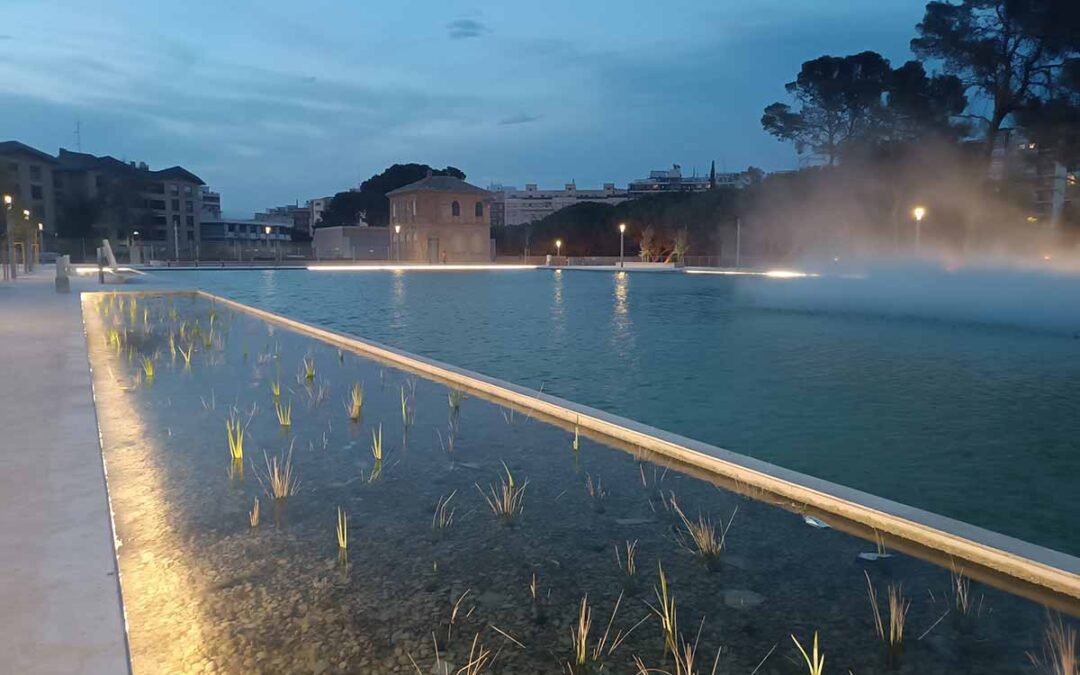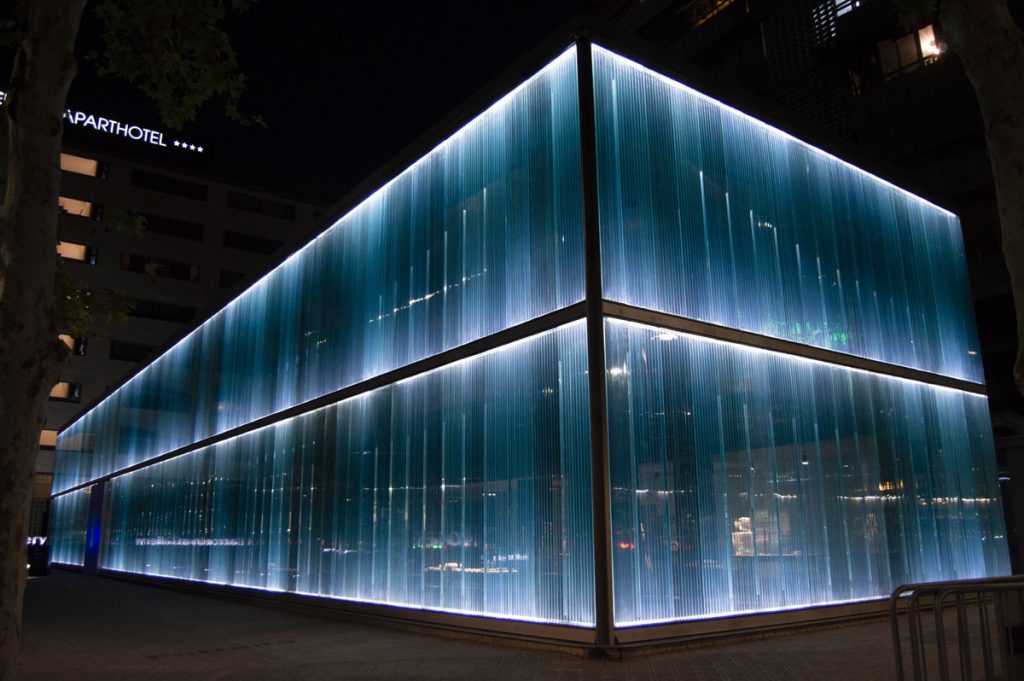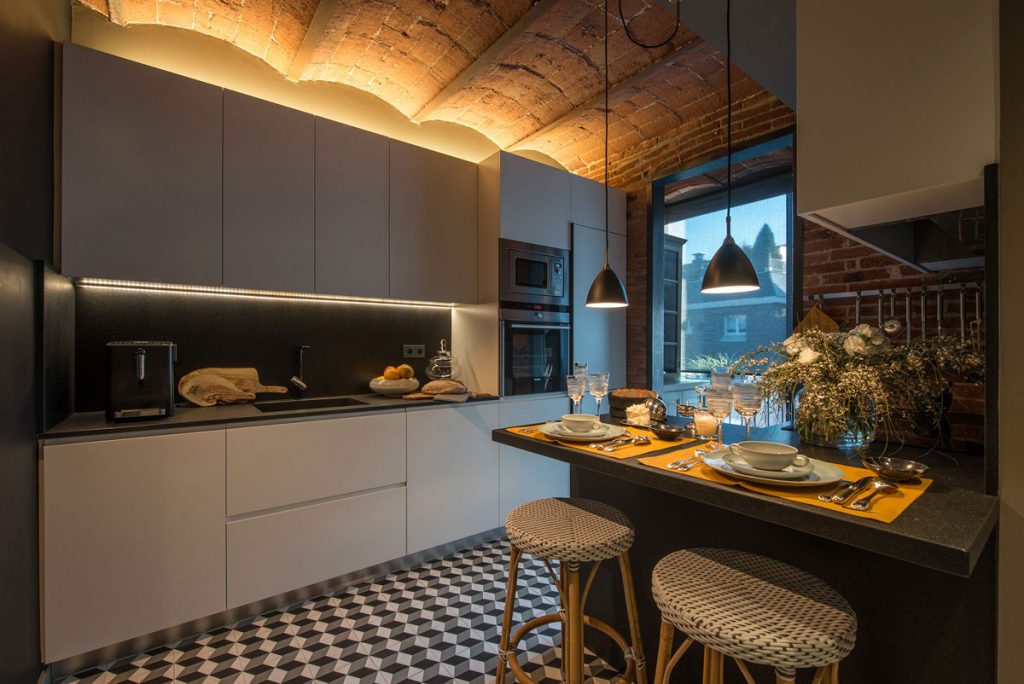
Kitchens are the heart of the home; they are not only used for preparing food, but they are often the space where we meet family and friends, and even where we work or study. Some kitchens are separate and others are fully open to the dining room. Some have abundant natural light and others have hardly any and need artificial light. But, in all cases the lifestyle and aesthetic preferences of the people who inhabit the kitchen are plain.
As it is a multifunctional space, it absolutely needs good lighting. Achieving that is not as easy as you might think, so we are going to give you 5 tips that will enable you to achieve optimal lighting for all your activities. It will also help if you read our article “The three types of linear lighting in the home”.
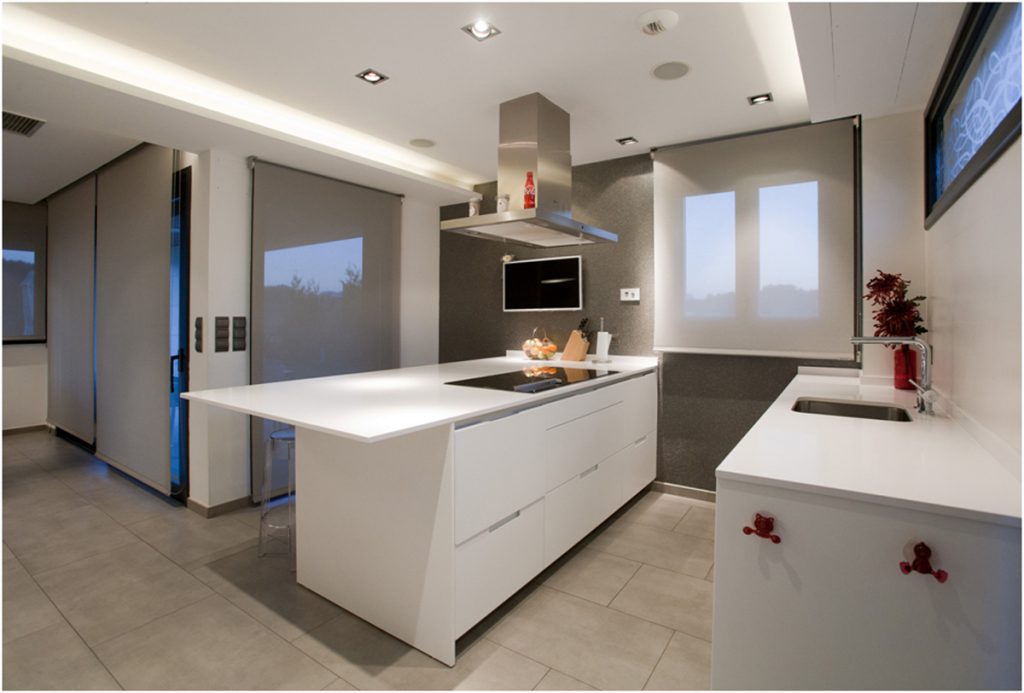
1. Achieve uniformity with ambient lighting
In kitchens, general ambient lighting is often the main source of light. The aim is to illuminate the area as uniformly as possible and provide sufficient light to see and carry out general tasks. Linear light fittings can do this in different ways.
. Linear recessed or surface lights. These provide general lighting and are usually distributed evenly on the ceiling.
. Linear suspended lights for direct or direct and indirect lighting, centred over the kitchen islands or the entire space.
. Linear lights on the kitchen fittings, projecting indirect light towards the ceiling. If the height of the space and the design of the kitchen allow it, this is a very elegant solution and out of direct view. High powered lights, up to 28.8 W/m and circular opal diffusers are required to avoid shadows on the ceiling.
A tip: it is better not to illuminate only from the ceiling, since shadows may fall on the work surface where the food is prepared. You will have to fit lights above the work surface.
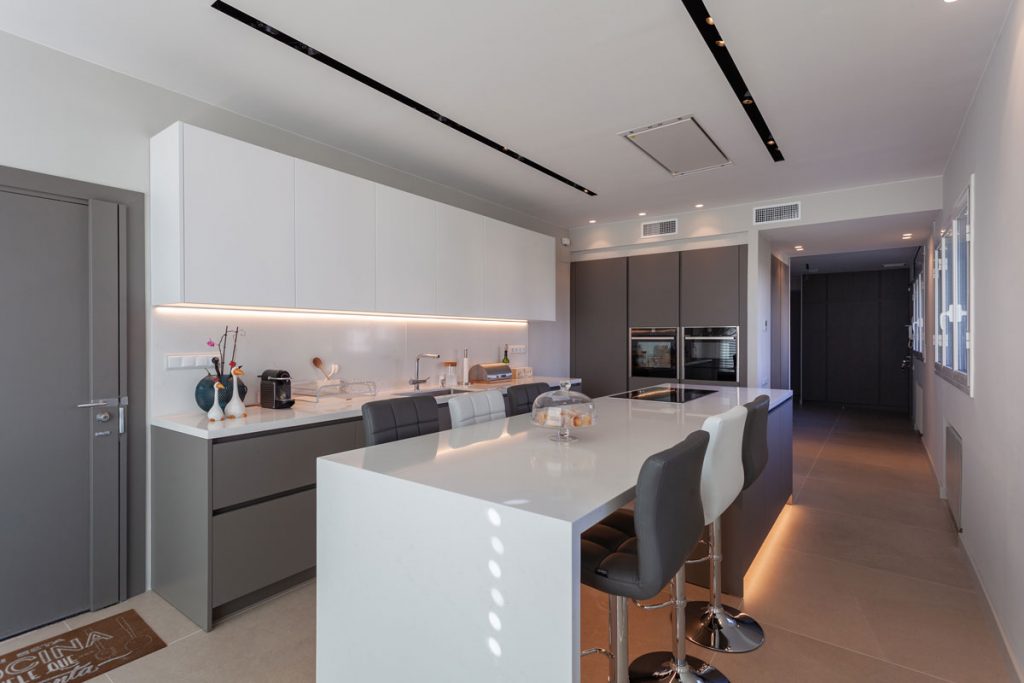
2. Precision and convenience in food preparation by lighting work areas
Linear leds perfectly solve lighting those places in the kitchen where you actually work. With their different sizes and formats, they provide ideal solutions for any task, and can illuminate work surfaces most efficiently.
The secret to designing this type of lighting is correct placement and glare control. Linear LEDs can be installed in two ways:
. Suspended linear lighting. This is a modern, minimalist solution, which works for both islands and countertops. It is usually fitted directly above work surfaces. To minimize glare, it is best to install them at least 75 cm from the surface to be lit. Alternatively, you can use anti-glare accessories or regulate the power of the fitting.
. Linear lighting for countertops. This can be integrated into top cabinets, extractor hoods or inside cupboards and on the sides of pantry doors.
. Linear lighting integrated into furniture. It is recommended to place it inside drawers and inside cupboards or pantries.
One more tip: don’t forget that some countertops are made of very shiny materials, such as marble or steel. In these cases, linear LEDs must always have a diffuser and their location and fitting into furniture must be carefully studied.
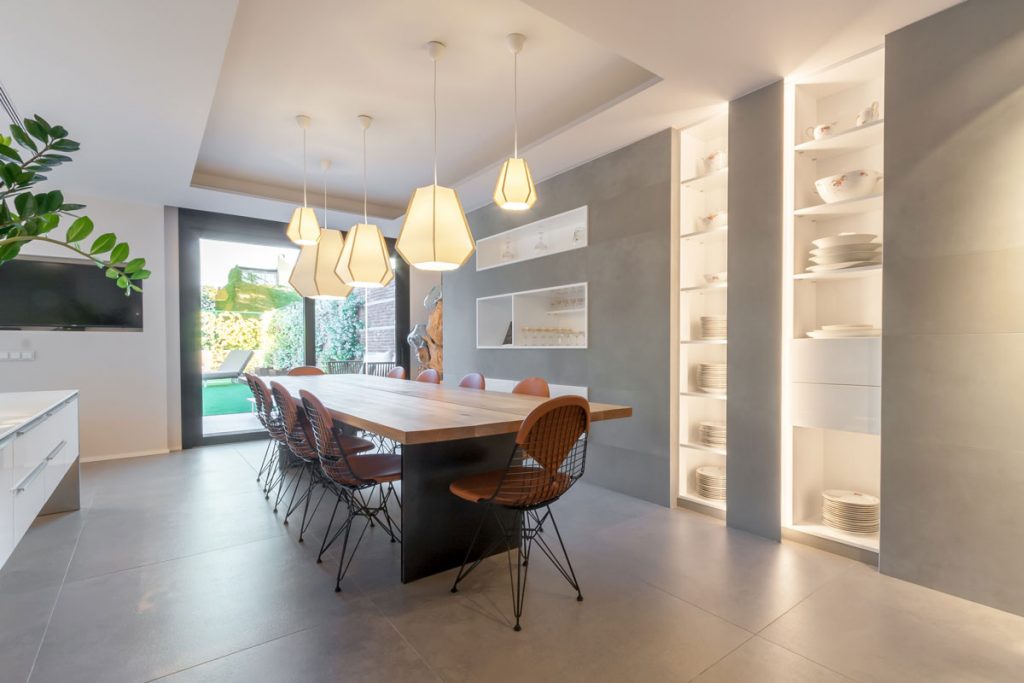
3. More personality with accentuated lighting
Like salt in a stew, the appropriate proportion of accentuated lighting will depend on each person’s personality, as well as the interior design. This type of lighting enables you to highlight details of the space, the decoration, the utensils and the foods on display. It creates depth and visual focus.
There are functional kitchens in which task lighting alone already creates a visually interesting accent. But in open kitchens, or in kitchens where part of the social activity of the house takes place, specific visual accent zones often appear. Here are some of the most important:
. Skirtings and lit perimeters. They draw attention to isles or kitchen furniture, slightly separating them from the floor or walls. It is important to correctly dimension them for proper light emission.
. Integrated lighting in shelves. Ambient light usually already provides general lighting to the shelves, but nowadays, thanks to miniature LED strips we can give a special prominence to the objects they display. In this case, the way you integrate the lights is everything. Placing a LED at the front, rear, top or bottom will provide a totally different effect. The chosen solution will depend on the type of objects to be illuminated and the design of the furniture.
Another tip: if we want to highlight glasses, bottles or other translucent materials, it is advisable to experiment with backlighting. Placing the lights at the back will make integrating them into the fixtures easier and will provide an unexpected lighting touch.
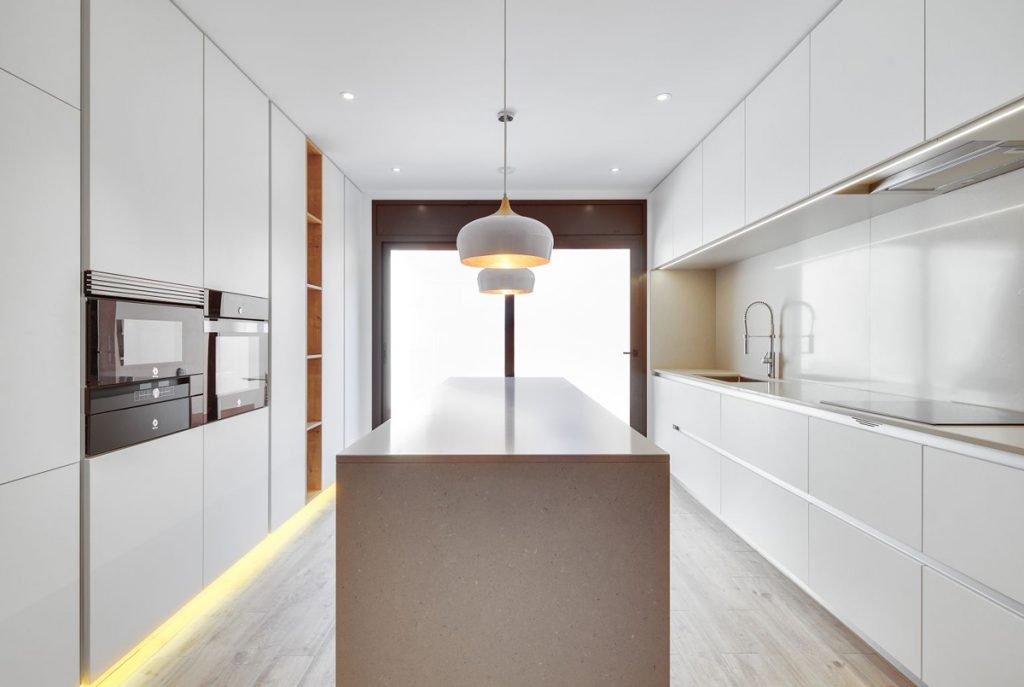
4. Getting the right colour temperature
Several factors influence the choice of colour temperature, but the amount of natural light present, the type of lighting and space, the feeling to be conveyed, the style of the interior design and the personal preferences of the users are all important factors.
There are three main colour temperature ranges: warm white (2700 K to 3000 K), neutral, cool white (3500 K to 4100 K), and very cool, daylight white (5000 K to 6500 K). The higher the colour temperature of the LED, the more bluish the light it emits, and the lower the temperature, the warmer the light.
For ambient and task lighting in kitchens, LEDs with a colour temperature of 3500K to 4100K are often chosen to ensure that floors and work surfaces are lit by a neutral white light. But if we want to simulate natural light, sometimes much cooler light tones, around 5000-6500K, are used. On the contrary, to provide a feeling of intimacy, temperatures of 2700 K to 3000 K would be used.
For accentuated lighting, temperatures of 2700 K to 3000 K are often chosen to highlight objects and surfaces in warmer light. But you can also use the same temperature as the ambient light and highlight the objects through the intensity of the light.
In short, there is no single rule, but each case must be individually assessed. If you are undecided, you can always resort to the lights with variable colour temperature from Lluria!
One last tip: the materials in the floors and walls and the finishes in the kitchen will affect the light reflected in the space. It is worthwhile looking for a light shade that enhances existing materials and colours. In open kitchens, you must also consider the finishes in the dining room and the general effect you want to provide.
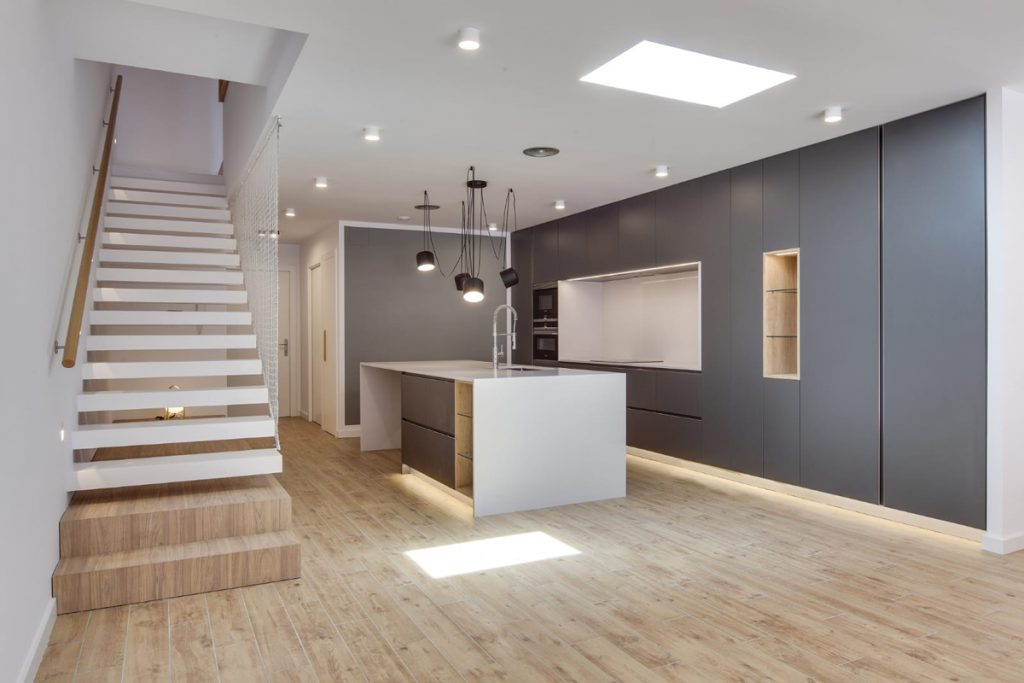
5. Controlling the various lights
Given the many types of kitchens, having the possibility of regulating the lights gives you flexibility when lighting the space. This is especially important in multi-purpose kitchens, as lighting needs can vary greatly. When preparing food, you’ll need a bright and diffused light, while, for the ambience, the table and after dinner conversation, dimmer lights are recommended. This is easily achieved by installing dimmers, components that will help you personalize the lighting in each situation and improve your well-being.

